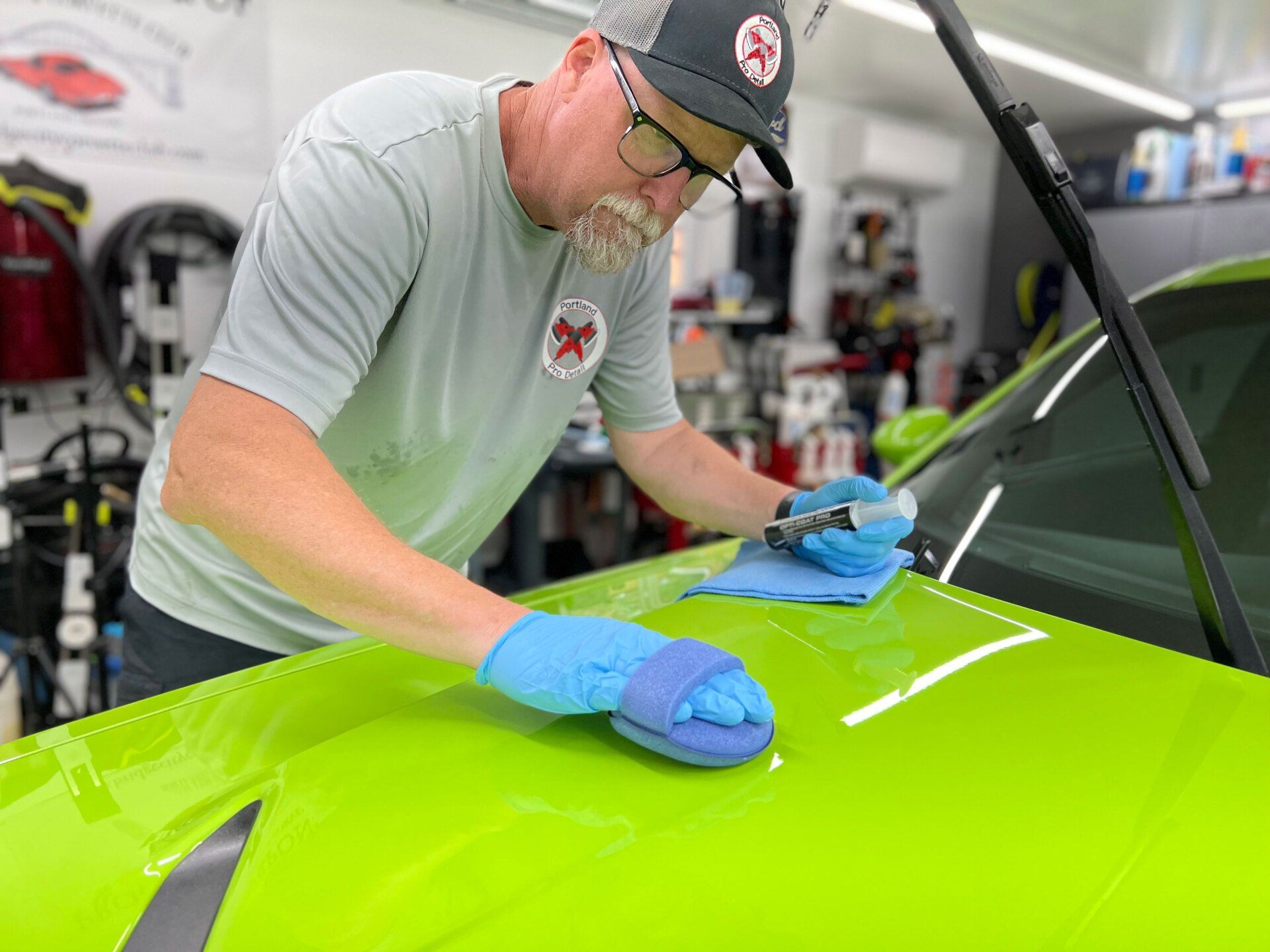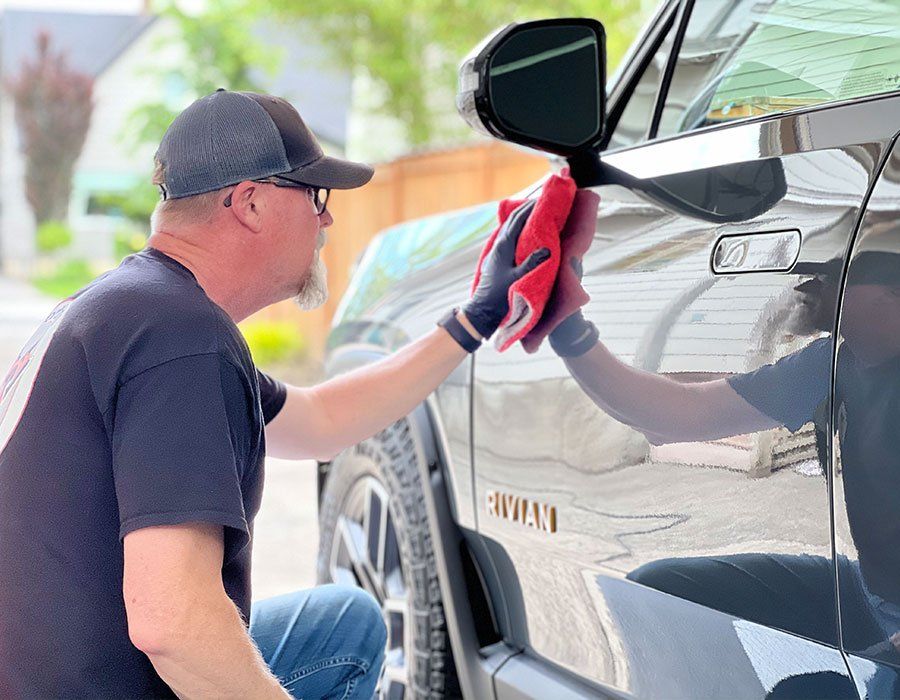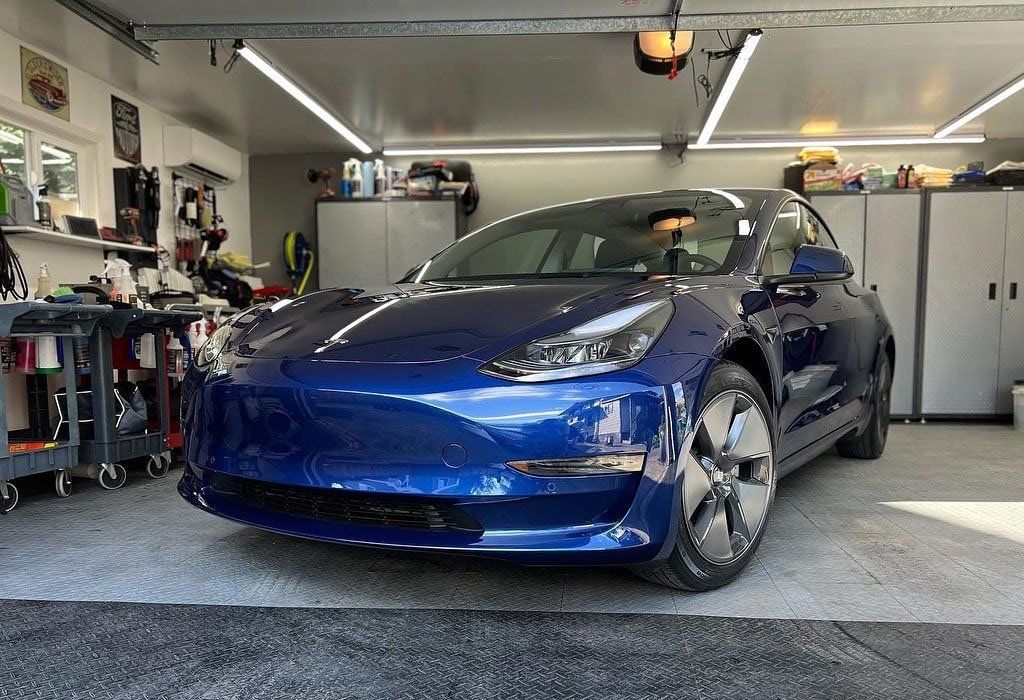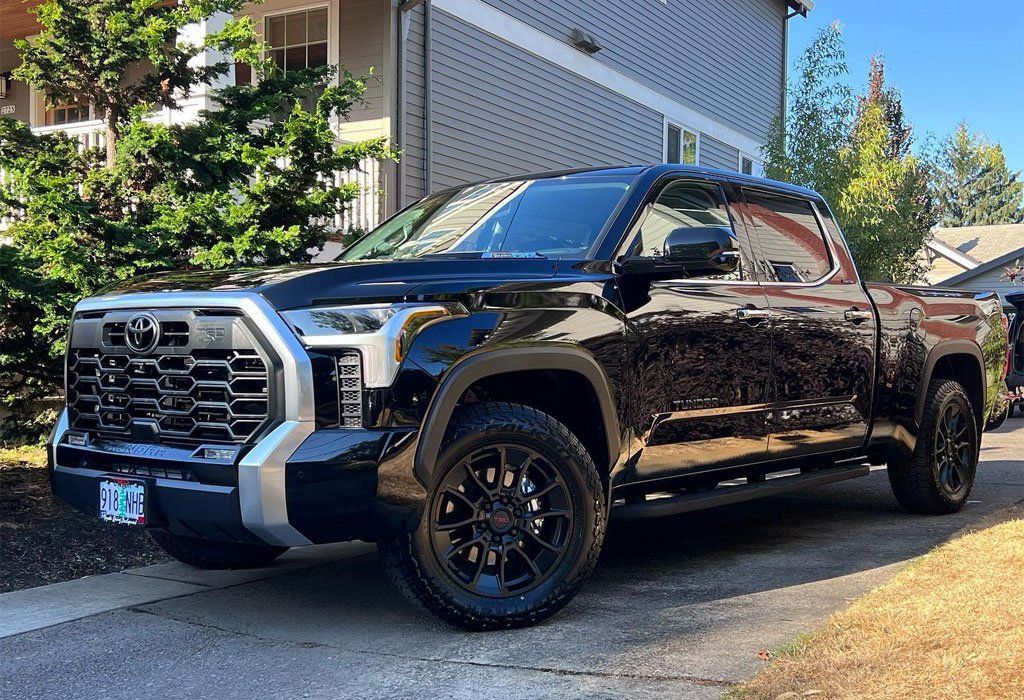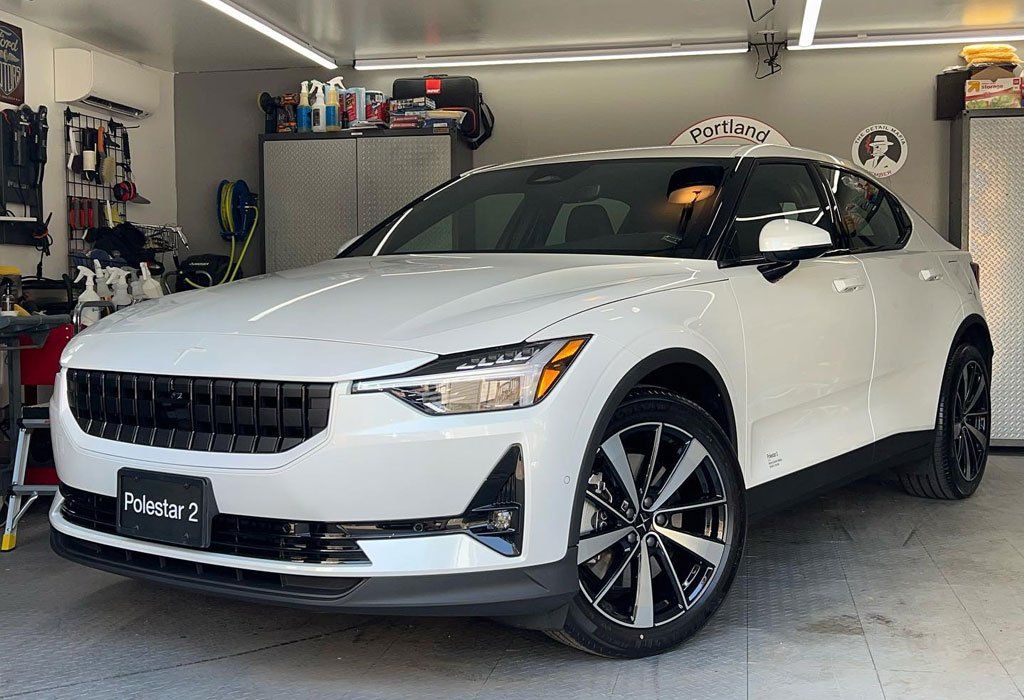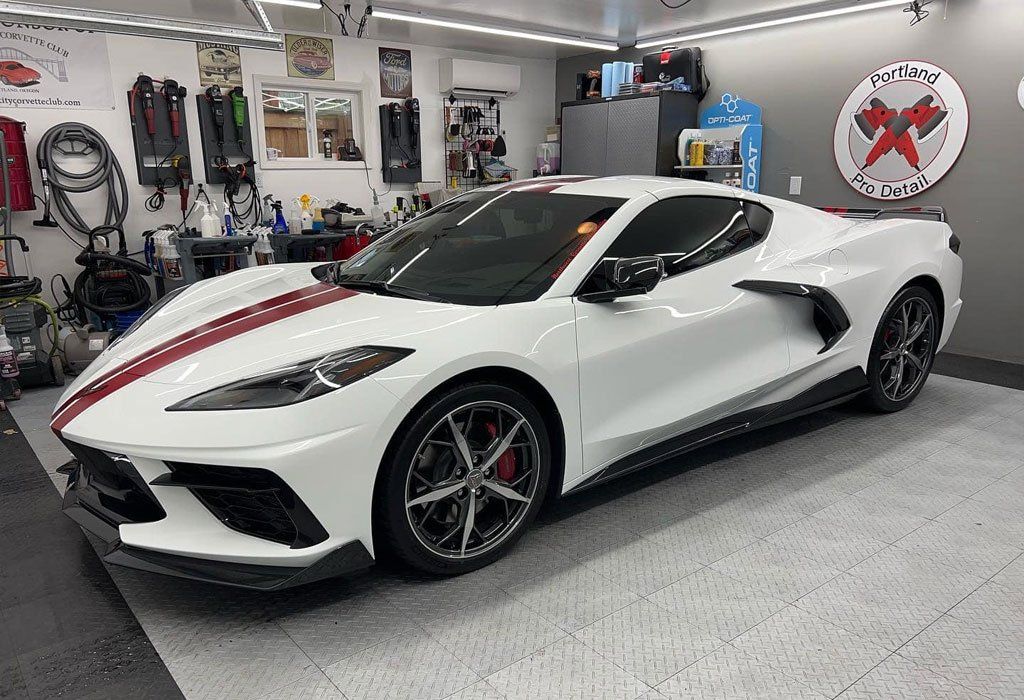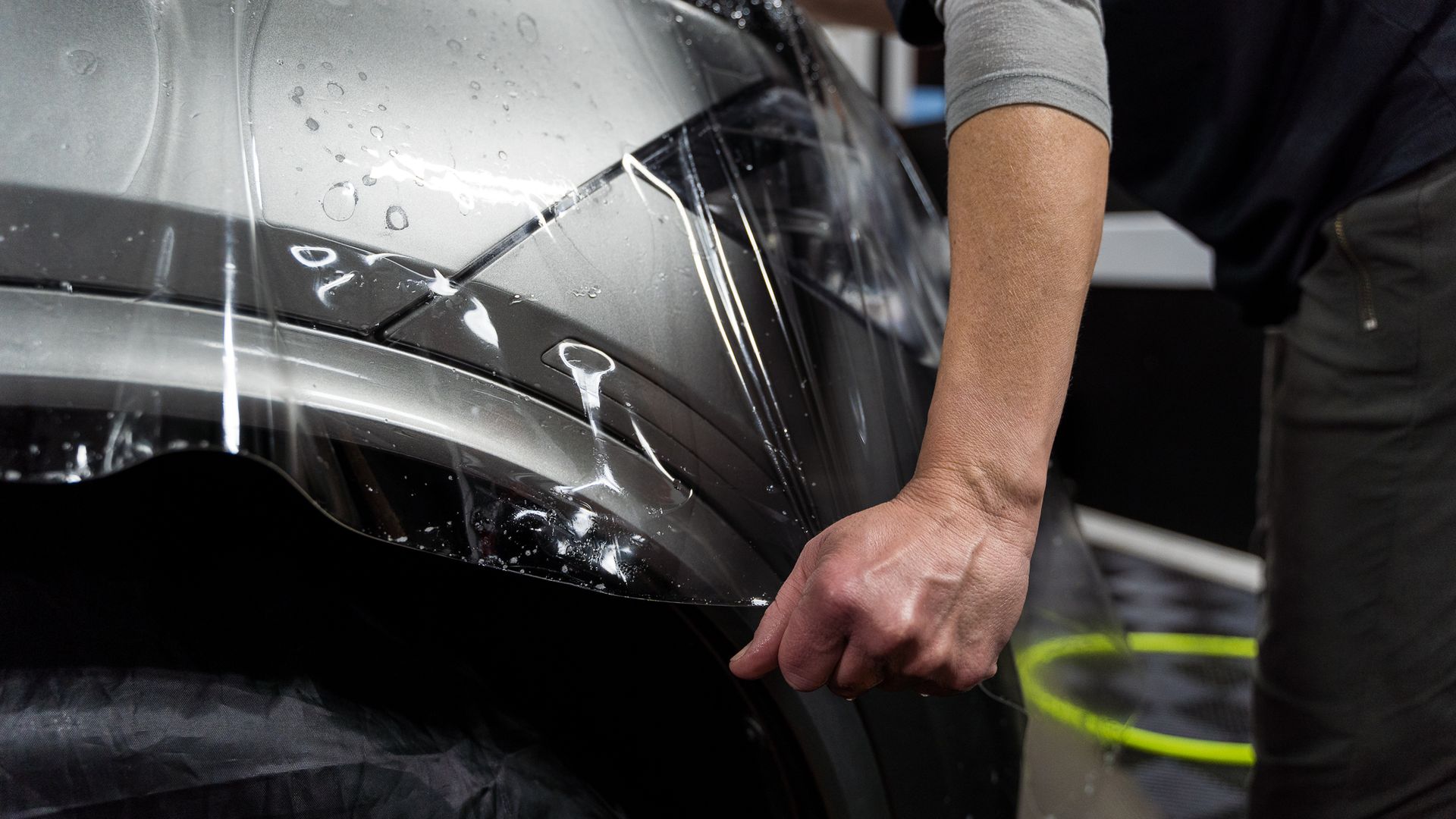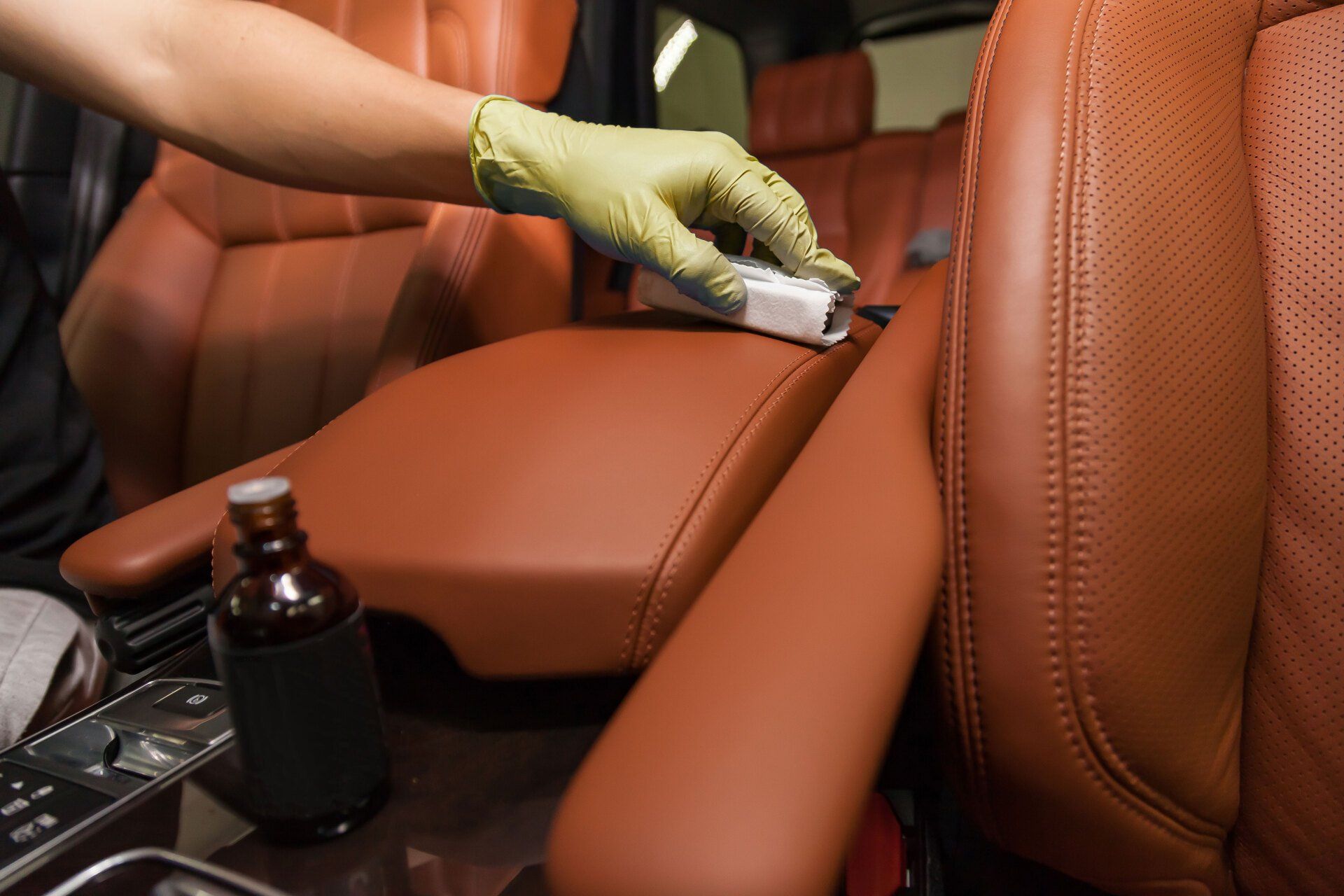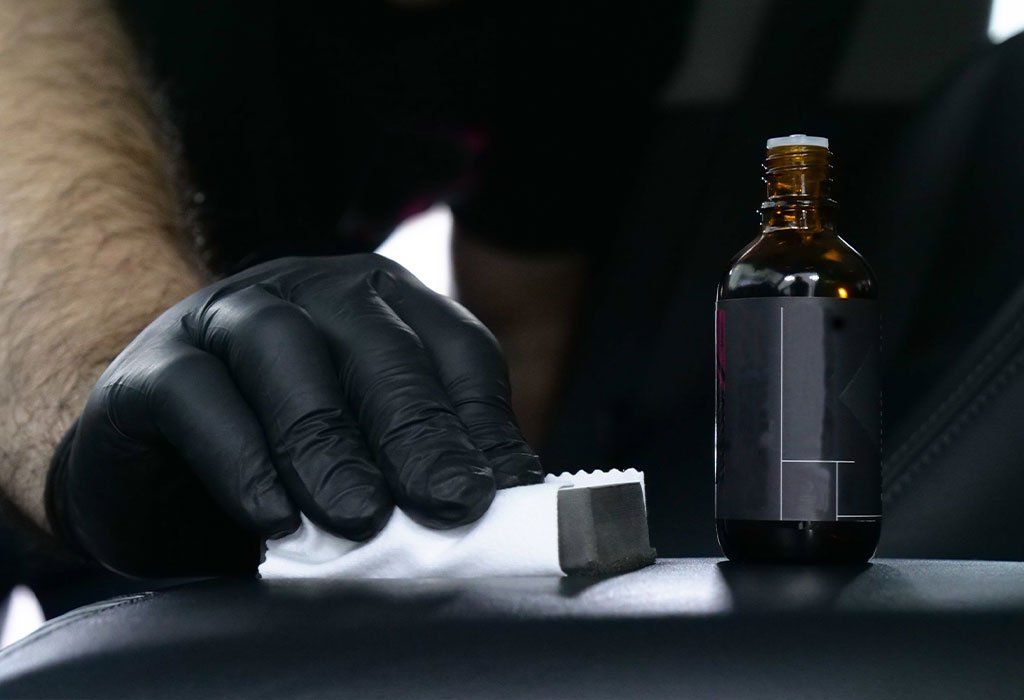Ceramic Coating vs. PPF: Which Vehicle Protection Option Is Best For You?
CALL (503) 444-7415
When it comes to keeping your vehicle looking new and protected, choosing the right option can feel a bit overwhelming. With so many products on the market, you're probably wondering what truly works best: ceramic coating or paint protection film (PPF). Both options offer impressive benefits, but they serve different purposes and are suited for varying needs. Let’s dive into a comparison of these two popular choices so you can find the perfect fit for your vehicle’s protection needs!
Ceramic coating offers a hydrophobic surface that makes cleaning easier while enhancing gloss, whereas paint protection film (PPF) delivers superior defense against physical damage such as rock chips and deep scratches. When deciding between the two, consider factors like your vehicle type, typical driving conditions, and personal preferences regarding maintenance; ceramic coatings are ideal for those seeking ease of upkeep, while PPF is highly recommended for high-value or frequently driven vehicles needing enhanced protection.
Ceramic Coating Benefits
One of the key advantages of ceramic coating is its ability to act as a durable, protective layer against the elements and daily wear. This high-performance barrier bonds to the car’s paint at a molecular level, significantly enhancing surface hardness. Studies suggest that ceramic coatings can increase a surface’s hardness by as much as 30% compared to untreated surfaces. When you're investing in a vehicle, shielding it from damage caused by exposure and regular use is a smart move. Think of ceramic coating as an invisible shield that preserves your vehicle’s pristine finish.
Beyond this enhanced hardness, another remarkable feature of ceramic coatings is their hydrophobic nature. When applied correctly, these coatings create an ultra-slick surface where water beads up and rolls off effortlessly. This not only means less time scrubbing away grime when washing your car but also reduces the likelihood of dirt or sap adhering to the painted surface in the first place. Imagine driving through rain without worrying about annoying water spots sullying your finish—this is what ceramic coating offers!
Furthermore, ultraviolet (UV) protection provided by ceramic coatings plays a vital role in preserving your vehicle's aesthetic appeal. Sun exposure can lead to oxidation and fading over time, dulling that perfect showroom shine. By applying a ceramic coating, you effectively guard against these damaging rays, allowing your car to maintain its glossy finish for longer periods. This is particularly advantageous for those living in sun-drenched regions where the sun mercilessly beats down on vehicles day after day.
In addition to protecting against environmental contaminants and UV damage, ceramic coatings are resistant to chemical staining from substances like bird droppings, tree sap, and road grime. Unprotected paint often suffers from unsightly blemishes caused by these materials, which can lead to costly detailing or repainting efforts later. With ceramic coating acting as a barrier, you can expose your vehicle to various environmental challenges without worrying about adverse effects.
The practical implications of these benefits are clear: investing in ceramic coating isn't just about keeping your car looking pristine; it's about safeguarding its long-term value and integrity. Whether you own a high-value sports car or simply want to keep your family sedan looking sharp, ceramic coating presents a strong case for being an essential addition to your vehicle maintenance routine.
With all these compelling advantages in mind, many car enthusiasts are turning to ceramic coatings as their preferred solution for vehicle protection. Having discussed the numerous benefits associated with this form of protection, it’s important now to turn our attention to another option that many consider equally valuable for safeguarding their vehicles.
Advantages of Paint Protection Film (PPF)
One of the most significant benefits of PPF is its robust defense against damaging elements. PPF serves as a shield, offering high-level protection from physical threats like rock chips and road debris. Imagine cruising down the highway; each bump and fly-on debris seems harmless until one day it leaves a nasty gouge on your pristine paint job. With PPF, you can drive with greater peace of mind, knowing that this film is designed to absorb impacts that would otherwise harm your car's finish.
Furthermore, the longevity of PPF is another point to consider. High-quality films can last between 5 and 10 years, greatly outpacing traditional wax options that require frequent reapplications. When investing in a product meant to protect your vehicle, knowing that it can endure several years adds value to the choice. It’s also worth noting that PPF comes in various thicknesses—ranging from 5 to 10 mils—to suit different driving experiences. For instance, if you’re on rugged roads or navigating city streets with countless potholes, opting for a thicker option could provide an additional layer of security.
How does this thickness translate into practical protection? The self-healing feature of PPF sets it apart, allowing repairs for minor abrasions without extensive work. This means daily wear and tear can "melt away," seamlessly restoring the film with heat exposure from sunlight or a simple heat gun. As a result, those little scratches from tree branches or light brushes against garage doors hardly become an issue. The film offers an advantage not only in protecting against scratches but also in fortifying your vehicle against harsh weather conditions and UV exposure. This aspect prevents fading and helps maintain that showroom shine over time—a critical factor in preserving resale value.
In addition to its protective attributes, customization options abound with PPF. Vehicle owners have the choice between various finishes, including gloss, matte, or satin, allowing them to match the film to their vehicle’s aesthetic seamlessly. For individuals with color-matched cars wishing for a polished look, this flexibility is particularly appealing.
Now imagine combining these properties with proper installation; the results are nothing short of extraordinary. Ensuring that PPF is applied by experienced professionals enhances not only adhesion but also optimizes its protective features for your prized possession. As we continue to explore the landscape of vehicle protection, attention turns next to how these options hold up over time under various conditions.
Durability of Both Options
When we talk about durability in the realm of vehicle protection, it's not just a matter of how long these products last; it's also about how they withstand everyday wear and tear. Ceramic coatings provide impressive protection with their chemical bonding capabilities and hydrophobic properties but have a finite lifespan. On average, you can expect a well-applied ceramic coating to last anywhere from 2 to 5 years. This variation depends largely on environmental factors such as sun exposure, acid rain, and even road salt. If you’re someone who parks outdoors frequently or lives in an area with harsher climates, considering higher-quality ceramic products may be worth your investment.
Meanwhile, Paint Protection Film (PPF) takes resilience to another level. With proper care, it typically lasts anywhere from 5 to 10 years. The longevity of PPF is largely a reflection of its material quality and installation process. A reputable professional installer will ensure that it adheres correctly and minimizes visible edges where dirt can accumulate or moisture can seep in, potentially causing deterioration over time.
While lifespans vary significantly between the two options, maintenance practices play a vital role in ensuring that each option performs effectively and retains its protective qualities throughout its life.
Maintenance Requirements
The maintenance requirements of each protective option are important considerations for car owners aiming to maximize their investments. With ceramic coatings, you'll want to adopt specific cleaning practices that complement their benefits. For instance, using pH-neutral cleaning products is essential because harsh chemicals can break down the protective layer, leading to diminished gloss and effectiveness over time. On top of that, opting for microfiber towels instead of traditional wash materials will prevent any scratches that might compromise the surface integrity.
In contrast, maintaining PPF requires a bit more finesse. It’s crucial to use gentle washing techniques to avoid lifting the film's edges or introducing dirt under it, which could degrade its sealing capabilities. Rinsing thoroughly before applying soap is critical because debris left on the surface can scratch the film. Regular inspections after washes allow you to catch any peeling or damage early on, preventing more extensive repairs later. Ultimately, while ceramic coatings tout ease of cleaning as one of their advantages—requiring less frequent waxing—the routine needed for PPF is equally manageable if approached with care. By understanding and adhering to each product’s unique maintenance needs, you can ensure they perform optimally throughout their respective lifetimes.
As we shift our focus from durability and maintenance, it's essential to examine how these two options differ aesthetically, shaping the overall look and feel of your vehicle.
Aesthetic Differences
When it comes to aesthetics, both ceramic coatings and paint protection film (PPF) provide unique advantages that can enhance your vehicle's appearance. Ceramic coatings are renowned for their nearly invisible layer, allowing the original color and gloss of your car to shine through brilliantly. Imagine stepping back and seeing not just a sleek exterior but a surface that seems to pulsate with depth and vibrancy. That glossy finish often gives cars a luxurious feel, making them look cleaner and more polished even after routine use. Ceramic coatings work wonders in enhancing your car's beauty, offering a deeper shine that makes the paint seem richer and more vibrant.
On the other hand, PPF can present a slightly different visual experience, especially as you invest in various types of films available today. Many modern PPFs are designed to be optically clear and nearly indistinguishable from your car's surface, providing top-notch protection against physical damage while preserving the aesthetic appeal of the paint underneath. This quality allows car owners to safeguard critical areas from pesky scratches without sacrificing the visual integrity of their vehicle.
However, it's important to note that some older or lower-quality PPF options may suffer from issues like yellowing over time, which can mar that perfect transparency and detract from your car’s appearance. Thankfully, advancements in technology have significantly reduced such problems in new films. It's crucial to choose high-quality products from reputable brands to ensure you're not compromising on aesthetics.
If you're leaning towards PPF, always check reviews and consider consultations that help you get a sense of how different films affect appearances. Understanding these aesthetic distinctions prepares you for a more informed decision as we turn our attention to the practical aspects involving investment and maintenance needed for each option.
Cost and Upkeep
Cost is always a significant factor in choosing the right vehicle protection option. For instance, ceramic coatings typically range from $500 to $2,000, which varies widely depending on the size of your vehicle and the expertise of the professional applying it. Such coatings not only add an appealing finish but can also be less costly upfront than other options.
On the flip side, Paint Protection Film (PPF) typically commands a higher price, often running between $2,000 and $7,000 for complete coverage. This price difference is largely attributed to factors such as the complexity of installation and the quality of the film used. Interestingly, while PPF comes with a steeper initial investment, understanding its longevity can shift perspectives. PPF applications might maintain effectiveness for several years before needing replacement, potentially balancing out that upfront cost over time. In contrast, while ceramic coatings may have lower initial costs, they do require reapplication every few years to sustain their protective qualities.
This leads us directly to the upkeep expenses associated with both products. If you're weighing long-term costs, bear in mind that ceramic coatings necessitate periodic maintenance. This means budgeting for future applications every few years, which adds to the total expense over time. On the bright side, many users find that routine care for ceramic-coated vehicles is less intensive; they simply enjoy washing them without worrying about degrading finishes. If your budget allows for it, investing in PPF could save you money in the long haul due to its longer lifespan despite its higher initial cost.
To gauge what makes sense financially for you, consider creating a simple comparison table detailing projected costs over time for both options. You might find that while PPF appears more daunting at first glance due to cost, its longevity offers compelling benefits by minimizing replacement frequency within your timeframe. By evaluating not just what you are paying today but also where your money goes tomorrow, you'll be better positioned to determine which option aligns with your vehicle’s long-term care needs.
Making Your Choice: Ceramic Coating or PPF?
Ultimately, your decision hinges on personal preferences and priorities. For instance, if you are a car enthusiast who frequently navigates harsh road conditions and wants an extra layer of protection against road debris, paint chips, and scratching, PPF might feel like the logical choice. With its robust defense and self-healing properties, it can endure the wear and tear of daily adventures while keeping your vehicle's paint intact.
On the other hand, consider someone who desires a low-maintenance solution with that desirable glossy finish. Perhaps they take pride in showcasing their vehicle’s appearance during weekend gatherings or car shows. They might lean towards ceramic coatings, which, while not offering the same level of abrasion protection as PPF, do provide excellent ease of cleaning and a stunning shine.
- Personal Preferences: When selecting between the two options, think about how you envision using your vehicle. If you regularly drive long distances in areas where gravel or debris could damage your car's exterior, the investment in PPF is justifiable. However, if your daily commute involves smooth city roads and aesthetics rank high but without demanding too much upkeep, ceramic coating may fulfill your needs better.
- Value of the Vehicle: Another consideration is the value of your vehicle. High-value or luxury cars receive special attention regarding protection methods. In these cases, applying PPF can safeguard those precious paint jobs from potential damage that could diminish their resale or aesthetic value. Several experts recommend using PPF on newly purchased luxury cars to maintain their pristine condition over time. Conversely, vehicles that serve as reliable daily drivers—like commuter cars or family minivans—often don’t face the same risks but could still use some help in maintenance. Ceramic coatings effectively enhance gloss and ease cleaning routines for those everyday warriors without breaking the bank.
- Final Considerations: As you assess these elements relative to your unique situation, think about exposure conditions and usage patterns; for example, do you often find yourself near construction sites? Are you regularly parked under trees? Will reselling the vehicle matter to you in a few years? Furthermore, if indecision strikes, consider a hybrid approach: applying PPF to high-impact areas such as the front bumper, where damage is most likely, while opting for ceramic coating on the remaining parts of your vehicle. This strategy can effectively balance protection with maintenance convenience.
Choosing between ceramic coating and PPF is about aligning your investment with your lifestyle and preferences to ensure your vehicle remains beautiful for years to come.
Top Ceramic Coating and PPF Services in Portland, OR
Ready to give your vehicle the long-lasting protection it deserves? Portland Pro Detail delivers expert ceramic coating and premium paint protection film services designed to defend your car from the elements while keeping it showroom-sharp. Whether you're cruising the city streets or heading out on Oregon’s scenic highways, our skilled team ensures your vehicle stays sleek, glossy, and shielded against road wear. Schedule your appointment today and drive with confidence, knowing your car has the ultimate protection.

